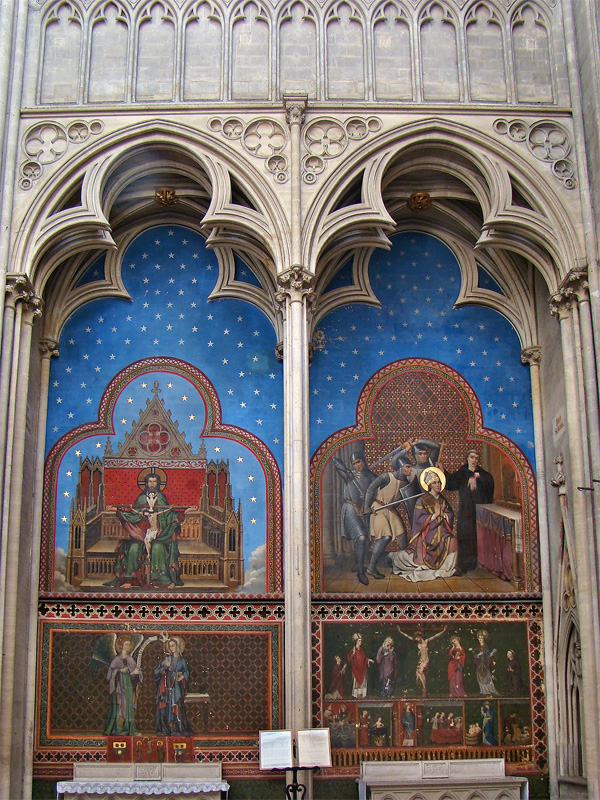

An extremely common and well-worn architectural device is the arch. The earliest arches were used by the ancient Romans in 2 BC, who originated the round Roman arches. An example of a Roman arch is this bridge near a school in my city.

The moorish arch, common in Islamic architecture, is my least favourite arch. Its design makes it weaker, in exchange for a more unique design. Unique doesn't mean good though. It doesn't even give you as much space to walk through it. Zero stars.

The ogee arch has a funny name, so I like it. An ogee is the name given to objects that can be described as serpentine, or s-shaped. An ogee arch is an arch composed of two ogees, mirrored left-to-right and meeting at the top. They sort of look like fat pencils. They were common in Italian and English Gothic architecture.

The trefold arch is my favourite arch. Also known as the three-foiled cusped arch, it is an arch that incorporates the shape or outline of a trefoil (basically three overlapping rings). It's been widely used due to its significance in Christian symbolism.

The Confederation Bridge is a bridge in Canada that connects Prince Edward Island to New Brunswick. At over eight miles, it is the longest bridge in all of Canada, and the world's longest bridge over ice-covered water. It costed 1.3 billion Canadian dollars to build. As you can see in the picture below, the bridge makes use of many broad, short arches to support itself, and the bridge itself is one big arch.

If you've ever been to Pisa, you've probably posed with your arms outstreached, trying your darndest to keep that leaning tower from falling down. But how did it start to lean in the first place? Experts say that, as the tower was being constructed, the tower's foundation began to settle unevenly, and so it began to tilt. War broke out, and construction stopped for fifty years, probably preventing the tower from falling down completely, but it continued to fall, until engineers in the 20th century finally managed to stabilize it. In the present day, barring an earthquake or some other disaster, there's no real need to fear the collapse of the tower. It has so many tourists working to keep it from falling, after all.
Banner image property of Owen Cyplops
Moorish arches image licensed under the Creative Commons Attribution 2.0 Generic license
Ogee arch image licensed under the Creative Commons Attribution-Share Alike 2.0 Generic license
Trefoil arch image licensed under the Creative Commons Attribution 2.0 Generic license